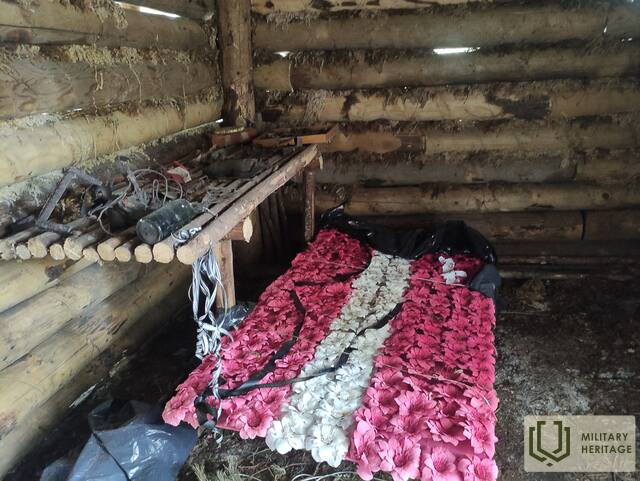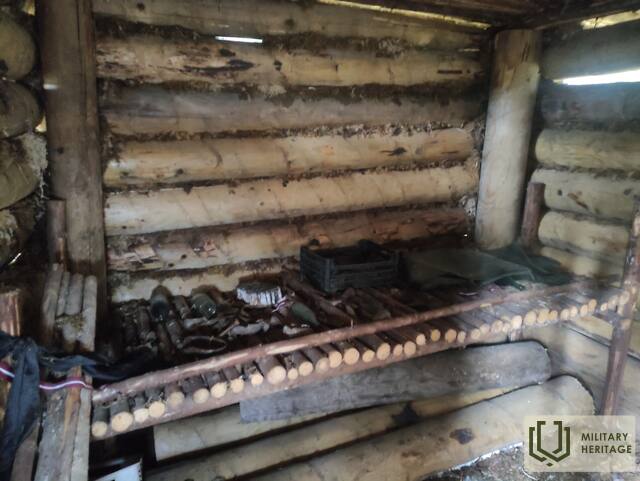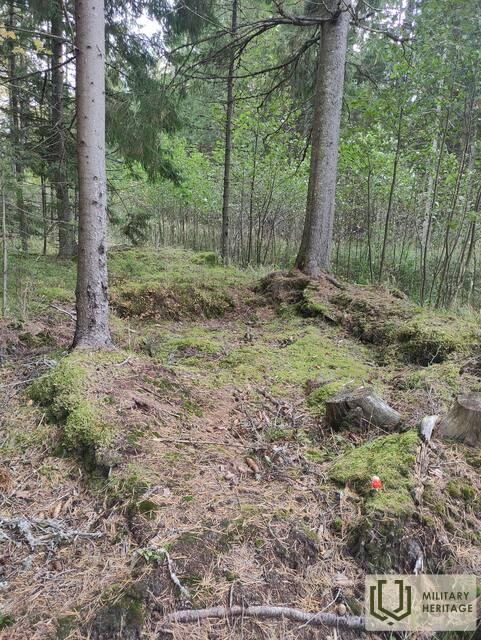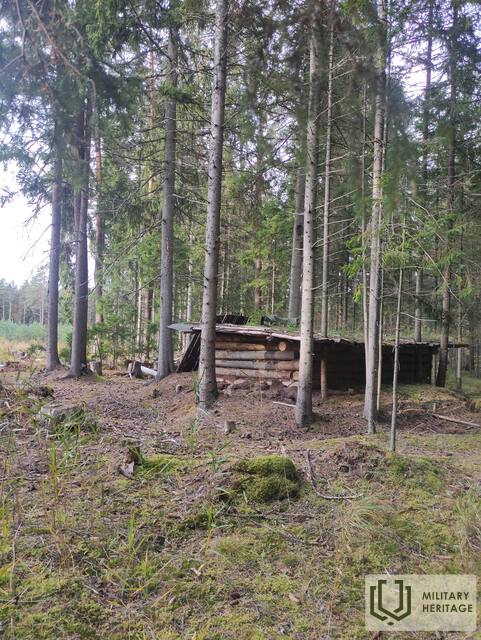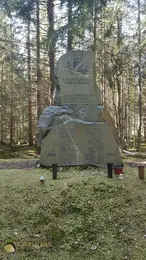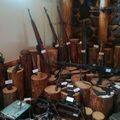Dzelzkalnių mūšis Zūrių miške 1946 m. vasario 23 d.
1945/46 m. žiemą Žalvarinis pulkas praleido Zūrių miške, Dzelzkalnių apylinkėse, kur buvo pastatyti keli bunkeriai. Ten gyveno apie 40 partizanų. 1946 m. vasario 23 d. stovyklą apsupo SSRS vidaus reikalų kariuomenė ir įvyko įnirtingos kautynės.
Zūrių miško Dzelzkalnių vietovėje buvo pastatyti keli bunkeriai nacionalinei partizanų grupei „Misiņš“. Ten gyveno apie 40 partizanų. Tuo metu grupė leido savo laikraštį „Kurbads“, kurį redagavo buvęs karo korespondentas Pēteris Arvīds Šāvējs.
1946 m. vasario 23 d. stovyklą apsupo SSRS vidaus reikalų kariuomenė. Kai grupė išsivadavo iš apsiausties, žuvo aštuoni partizanai. (Kaip teigia tuometinis grupės kontaktinis asmuo Tālivaldis Bāliņš, šeši žuvę liko mūšio vietoje, o du buvo čekistų išsivežti ir palaidoti nežinomoje vietoje. Tačiau, remiantis antkapiais, įrengtais Dzelzkalnų brolių kapinėse, septyni iš žuvusiųjų vasario 23 d. šiuo metu ten palaidoti.) Likusiai grupės daliai pavyko išsiveržti iš apsiausties sunaikinus du komunistų kulkosvaidžių padalinius, kurie turėjo atkirsti galimą partizanų atsitraukimo kelią. Po to grupė išsiskyrė: dalis jų patraukė į Kabilės miškus, du partizanai – į Ventspilį, o likusieji, perėję Ventspilio–Rygos plentą ir Rindos upę, pasiekė Puzes Bētmeji.
Vasario 23-iosios mūšyje žuvo pulkininkas leitenantas Rūdolfs Opmanis, Žemės ūkio akademijos 3 kurso studentas Pēteris Šāvējs, elektrotechnikos inžinierius Jānis Sēkliņš, Medicinos fakulteto 3 kurso studentas Lūdolfs Kļava, Komercinės mokyklos absolventas Alfrēds Grāvelsiņš, studentas miškininkas Bruno Auers, Teisės fakulteto absolventas Maksis Ķierpe ir Roberts Krastiņš. Šeši iš jų buvo palaidoti 1946 m. pavasarį partizanų rėmėjų toje pačioje vietoje, Vārnu kaime. Žuvusių partizanų laidojimo vietą per visus okupacijos metus ne kartą pažymėjo ugalietis Imants Kalnenieks.
Latvijos karių kapinės ir atminimo vietos: Ugalės parapija, tautinių partizanų brolių kapinės netoli Dzelzkalnio (karavirukapi.blogspot.com)
Susijusi laiko juosta
Susijusios temos
Susijusios vietos
Nacionalinių partizanų brolių „Dzelzkalni“ kapas
Kapinėse pastatytas paminklas tautinių partizanų atminimui. Akmenyje iškalti Puzės-Piltenės partizanų grupėje tarnavusių partizanų vardai. Paminklo papėdėje esančioje granito plokštėje iškalti metų skaičiai (1945–1953) ir 36 žuvusių partizanų vardai.
1946 m. vasario 23 d. Tārgalės valsčiuje netoli Vārnuvalko įvyko kruvinas mūšis tarp Latvijos nacionalinių partizanų grupės, vadovaujamos vado Brīvnieka, jų stovyklavietėje ir sovietų okupacinės armijos naikintojų dalinio. Mūšyje žuvo šeši partizanai, kuriuos vietos gyventojai slapta palaidojo ten esančiame miške. Vėliau ten pat be teismo ar nuosprendžio buvo palaidoti dar du sušaudyti partizanai. Vietinių gyventojų šis miško kampelis buvo vadinamas Dzelzkalno kapinėmis, kurias daugelį metų galėjo rasti tik žinovai – pagal kryžiaus ženklą eglėje.
1989 m. vasarą Latvijos nacionalinio išlaisvinimo armijos (LNNK) Ugālės skyriaus nariai padėjo beržinius kryžius Puzės-Piltenės grupės, žuvusių 1946 m. vasario 23 d., nacionalinėje laidojimo vietoje Zūrių miško Dzelzkalnių vietovėje ir ieškojo žuvusiųjų giminaičių Latvijoje ir užsienyje.
1991 m. balandžio 27 d., dalyvaujant žuvusiųjų artimiesiems ir kelių šalių nacionalinių organizacijų atstovams, kapus pašventino teologijos profesorius Roberts Akmentiņš, ir jie buvo pavadinti Dzelzkalnų brolių kapais.
Rendos nacionalinio pasipriešinimo judėjimo muziejus
Muziejus yra įsikūręs už kelių kilometrų nuo Rendos parapijos centro. Parodoje pasakojama apie 50 metų trukusį pasipriešinimo judėjimą Latvijoje: pasipriešinimą pirmajai sovietų okupacijai, pasipriešinimą nacistinės Vokietijos okupacijai ir ginkluotą bei nesmurtinį pasipriešinimą sovietų okupacijai. Paroda įsikūrusi dviejuose pastatuose. Pirmajame pastate saugomi pirmosios sovietų ir vokiečių okupacijos įrodymai. Parodoje eksponuojamas restauruotas tvarto pastatas, kuriame dėmesys sutelktas į Nacionalinį partizaninį karą. Tarp dviejų pastatų yra autentiško išplanavimo bunkeris ir kareivių naudoti apkasai. Netoli muziejaus Rendoje esantys kasinėjimai, blindažo aikštelė ir kliūčių ruožas tarnauja kaip jaunimo sargybinių ir visų susidomėjusiųjų treniruočių aikštelė. Apsilankymus būtina užsisakyti iš anksto.
Vienas didžiausių nacionalinių partizanų mūšių, vadinamas Āpūzniekų mūšiu, įvyko 1946 m. sausį netoli čia. Mūšyje Kabilės nacionalinis partizanų būrys nugalėjo daug didesnes okupacinės valdžios pajėgas. Mūšio vietoje, kurioje yra informaciniai stendai, dabar įrengta poilsio aikštelė.




